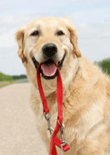
The Dog Walking Formula
By Sally Gutteridge | Posts , Training
 Dog walking can be made easy and fun by teaching your canine to behave nicely both on and off leash. This could take effort with some dogs, however all dogs will learn when taught properly, therefore the effort will be worth it.
Dog walking can be made easy and fun by teaching your canine to behave nicely both on and off leash. This could take effort with some dogs, however all dogs will learn when taught properly, therefore the effort will be worth it.
To enjoy dog walking there are three areas that you can concentrate on. These are outlined below;
- On leash obedience; teach your dog to be nice on the leash and not to simply drag you along to where he would like to go.
- Off leash obedience; teach recall to your dog and educate him to stay nearby on walks.
- Cope with distractions; it is up to you to teach your dog to be respectful of both other dogs and people. Teaching the first two behaviors will make this easier.
On leash obedience
On leash obedience is paramount if you are going to enjoy dog walking. If your dog is adept at dragging you around, then you will not enjoy your dog walking experiences.
Often check collars or similar equipment is available to improve the dog’s behavior on the leash. This type of equipment should really be avoided and it is not based on a positive experience for the dog. An exception to this is the use of a harness or head collar if the dog is simply too strong to handle. Both the harness or head collar can be used together with positive dog training to improve the dog’s behavior on leash.
It is quite easy to improve a dog’s behavior, when dog walking on leash, using positive reinforcement.
Positive reinforcement works by rewarding the behavior that you would like the dog to repeat. This reinforcement is amalgamated with the removal of any type of reward when the dog is behaving in an unhelpful manner. So to improve leash walking it is important to encourage a loose leash by rewarding it.
Here is an example of how to carry this out in easy stages;
- Get your dog ready for a walk and prepare with plenty of treats or his favorite toy.
- You can begin this in the garden if you wish for you will only be rewarding a loose leash, the less distractions are better for training at this point.
- Stand still with your dog then when the leash becomes slack quickly praise him and give a reward.
- When the leash is continually slack and your dog is relaxed take a few steps in one direction. Then change direction whilst at the same time praising and rewarding your dog for a slack leash.
- Extend the walking distance and try to keep your dog’s attention on you with the treats and unexpected change of direction. He will learn to watch you.
- The trick is to build the distance walked but keep the leash slack. If at any point the leash becomes taut simply go back to standing still again and rebuild a slack leash.
Off leash obedience
Recall is very important when dog walking around people and other dogs. This is another habit that needs to be built gradually. Here are some recall stages and tips to help you successfully call your dog back;
- Begin by calling your dog back whilst he is on the leash and rewarding him with a small treat
- When you are certain that he will come back on the leash you can have someone hold your dog and call him a short distance to you for a treat. They will then drop the leash to the ground and to allow your dog to return to you. (This is useful because you can step on the leash to prevent last minute escape)
- Increase the distance as your confidence and dogs capability increases.
- Gradually introduce distractions but only when you believe your dog can cope with them.
Distractions
If you have successfully trained your dog in on and off leash obedience by reinforcing his attention on you then you can begin to introduce distractions. Remember to always set your dog up for success by introducing distractions when he can cope with them. If you need to make his reward tastier or interesting when introducing distractions than that’s fine, as your dog learns you can lower the value of reward.
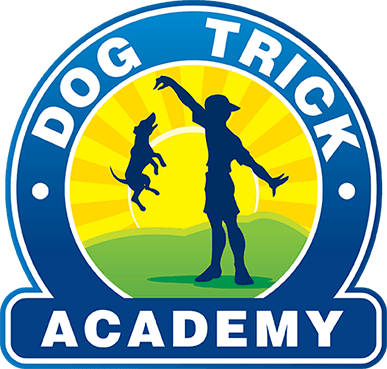
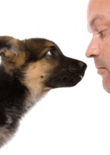
 Many parks and recreation grounds have their particular group. The same group of people that wander around daily together whilst their lucky dogs run and socialize together, the dogs and people become friends and everyone wins.
Many parks and recreation grounds have their particular group. The same group of people that wander around daily together whilst their lucky dogs run and socialize together, the dogs and people become friends and everyone wins.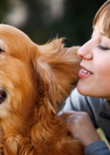
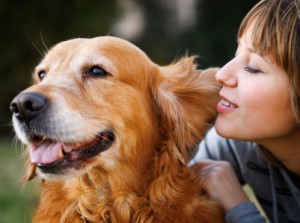 It is a term often used, dog whisperer. Giving the impression that communication with a canine is something of a rare achievement. A basic internet search will provide one with plentiful dog expert’s that offer advice and label themselves a dog whisperer.
It is a term often used, dog whisperer. Giving the impression that communication with a canine is something of a rare achievement. A basic internet search will provide one with plentiful dog expert’s that offer advice and label themselves a dog whisperer.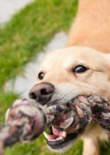
 Playing with your dog will build the relationship between you. It will use his mind in order to enable him to settle when you need him to, and an enthusiastic game will certainly be fun for both of you. The home that hosts multi dogs automatically provides stimulation for the animals by allowing interaction with each other. Single dogs benefit greatly from the interaction and stimulation they get when you play with your dog.
Playing with your dog will build the relationship between you. It will use his mind in order to enable him to settle when you need him to, and an enthusiastic game will certainly be fun for both of you. The home that hosts multi dogs automatically provides stimulation for the animals by allowing interaction with each other. Single dogs benefit greatly from the interaction and stimulation they get when you play with your dog.
 Dog training commands are widespread and varied. The humble and loyal canine is employed within so many roles that the list of dog training commands is getting lengthier all the time.
Dog training commands are widespread and varied. The humble and loyal canine is employed within so many roles that the list of dog training commands is getting lengthier all the time.
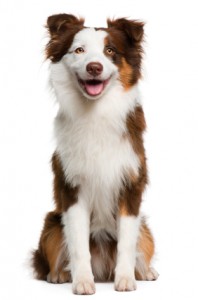 As a new dog owner it is perfectly normal to see your recent addition to the family as a complete mystery. Particularly with so much, and often conflicting, dog training advice available.
As a new dog owner it is perfectly normal to see your recent addition to the family as a complete mystery. Particularly with so much, and often conflicting, dog training advice available.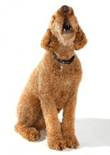
 An incessant barking dog is sufficient to drive the most patient and loving dog owner slightly mad. The most tempting thing to do in this circumstance is to shout at the excited dog to stop. By doing this though you are only getting the dog more excited. In many cases he will believe that you are joining in and bark louder still.
An incessant barking dog is sufficient to drive the most patient and loving dog owner slightly mad. The most tempting thing to do in this circumstance is to shout at the excited dog to stop. By doing this though you are only getting the dog more excited. In many cases he will believe that you are joining in and bark louder still.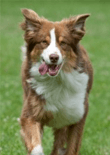
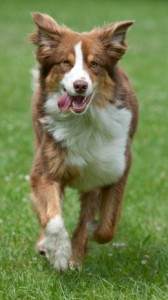 Recall training with your dog is crucial. The majority of dogs need to be able to run free to use up their energies on a daily basis. If your dog will not come back when called, then exercise can become a worrying and frustrating time.
Recall training with your dog is crucial. The majority of dogs need to be able to run free to use up their energies on a daily basis. If your dog will not come back when called, then exercise can become a worrying and frustrating time.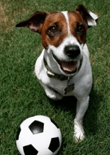
 Dog training games provide so much more than mental stimulation to your dog. They enable handler control and encourage the dog to focus. They build the relationship between you and your dog and bring the same relationship onto another level.
Dog training games provide so much more than mental stimulation to your dog. They enable handler control and encourage the dog to focus. They build the relationship between you and your dog and bring the same relationship onto another level.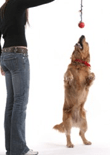
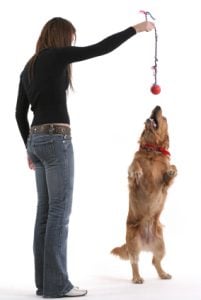 Basic dog training is not complicated. To train a dog is simply to teach him to do something. Dog training is often seen uniquely as teaching a dog to behave nicely, or do specific tricks to impress. What many people do not understand however is that is just as easy, if not easier, to train a dog to misbehave.
Basic dog training is not complicated. To train a dog is simply to teach him to do something. Dog training is often seen uniquely as teaching a dog to behave nicely, or do specific tricks to impress. What many people do not understand however is that is just as easy, if not easier, to train a dog to misbehave.